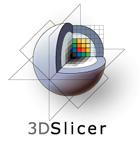PET-CT: Difference between revisions
(→Acknowledgement: plus logo) |
|||
| (2 intermediate revisions by 2 users not shown) | |||
| Line 21: | Line 21: | ||
= Acknowledgement = | = Acknowledgement = | ||
This project received support | This project received support from NCI/NIH grants 2R42CA153488-02A1, R41CA153488-01 and 3R42CA153488-03S1. | ||
PET-CT guidance needle biopsy application is built upon and contributes back to a variety of open-source efforts, including the following: | PET-CT guidance needle biopsy application is built upon and contributes back to a variety of open-source efforts, including the following: | ||
{| border="0" cellpadding="20" align="center" | {| border="0" cellpadding="20" align="center" | ||
| align="center" | | | align="center" | <ImageLink>http://public.kitware.com/Wiki/images/8/89/NeuralNav-SlicerLogo.jpg|http://www.slicer.org</ImageLink><br> [http://www.slicer.org <br> Slicer] | ||
| align="center" | <ImageLink>http://www.itk.org/Wiki/images/8/81/ITK-PNG.png|http://www.itk.org</ImageLink><br> [http://www.itk.org <br> ITK] | | align="center" | <ImageLink>http://www.itk.org/Wiki/images/8/81/ITK-PNG.png|http://www.itk.org</ImageLink><br> [http://www.itk.org <br> ITK] | ||
| align="center" | <ImageLink>http://public.kitware.com/Wiki/images/a/ac/Logo_optionVF-downsized.png|http://www.igstk.org</ImageLink><br> [http://www.igstk.org <br> IGSTK] | | align="center" | <ImageLink>http://public.kitware.com/Wiki/images/a/ac/Logo_optionVF-downsized.png|http://www.igstk.org</ImageLink><br> [http://www.igstk.org <br> IGSTK] | ||
| align="center" | <ImageLink>http://public.kitware.com/Wiki/images/ | | align="center" | <ImageLink>http://public.kitware.com/Wiki/images/b/b0/PlusLogo100.png|http://https://www.assembla.com/spaces/plus/wiki</ImageLink><br> [https://www.assembla.com/spaces/plus/wiki <br> PLUS] | ||
|} | |} | ||
Latest revision as of 21:51, 28 January 2015
__NOTITLE__
|
|
OverviewThe overall goal of this project is to improve the clinical effectiveness of liver lesion biopsy by fusing respiratory-compensated PET/CT with CT images in the interventional CT suite. PET imaging provides information on functional or metabolic characteristics of tumors, whereas CT predominately assesses tumor’s anatomical and morphological features. Given the ability of PET to localize malignancies in situations where the same tumors do not have a CT correlate, PET/CT guided biopsy helps to improve the diagnostic yield of liver lesion biopsies. However, the diagnostic benefit of PET images, even from hybrid PET/CT machines, is gravely affected by respiratory motion artifacts in current practice. CT data acquisition is rapid and represents a relatively instantaneous snapshot during the breathing cycle. In contrast, PET data acquisition typically requires at least one minute using the newest scanners, but often requires as long as five minutes per gantry table position. These prolonged acquisitions lead to respiratory motion artifacts in the PET images, which are particularly pronounced in the lower lung fields and in the liver. These artifacts cause discrepancies in the spatial correspondence between the CT and PET data, potentially leading to inaccurate tumor localization and incorrect tumor staging. Hence, the development of an effective PET-CT guided biopsy methodology for liver lesions requires a robust respiratory motion correction technique. In this project, we are developing algorithm and software for PET/CT-fused needle biopsy guidance.
AcknowledgementThis project received support from NCI/NIH grants 2R42CA153488-02A1, R41CA153488-01 and 3R42CA153488-03S1. PET-CT guidance needle biopsy application is built upon and contributes back to a variety of open-source efforts, including the following:
|



